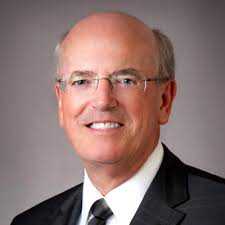Why Schools Need to Change
The Brink of Closure: What Motivates Higher Education to Change?
Topics

Today’s learners face an uncertain present and a rapidly changing future that demand far different skills and knowledge than were needed in the 20th century. We also know so much more about enabling deep, powerful learning than we ever did before. Our collective future depends on how well young people prepare for the challenges and opportunities of 21st-century life.
How do we motivate people to even consider the possibility that significant change is needed?
There are many articles written about the need for change in higher education. The primary options seem to be either reinvent the entire higher education system or honestly assess whether “the way we’ve always done things” continues to be relevant to a newer, more diverse generation of learners. In a previous posting, I wrote about the value of a liberal education and the connection of that broad-based education to success in “real life.” And there are times when we need to put our own critical thinking and creative problem-solving skills to work to create a better future for our students and for our institutions.
So, how do we motivate people to even consider the possibility that significant change is needed? I know one approach that will not work. It is complete folly to think that people will willingly change if we simply threaten their very existence. You know the message—change the way you do things or your job will cease to exist, or your institution will close, or we’ll end up like “College X” which has been closing programs and laying off faculty and staff!
I know this based on my own experience and much personal reflection. Many years ago, I was a faculty member at a professional college that had existed rather successfully for over 100 years as part of a large private university with several urban campuses and dozens of other colleges and programs. We were proud of our history and the many accomplishments that had been achieved over the previous century; we were reasonably sure that the values we held dear would serve us well for another century or two.
Looking back, it was apparent that our world had changed in a number of significant ways, but we were too busy doing what we were doing or too isolated to take notice:
- The robust applicant pools that we had enjoyed in the past had shrunk to the point at which there was just a little over one applicant for every open position.
- Public schools in our discipline had seen state support shrink.
- Private schools had continued to raise their tuition to meet growing expenses while continuing to fall behind financially.
- Student debt was on the rise.
- Members of the profession perceived that we were turning out an oversupply of graduates to the detriment of their ability to make a living.
- Over time, we had not invested sufficiently in the infrastructure of our facilities and had not invested wisely in productive faculty and staff development.
- We continued our long tradition of delivering a faculty-driven curriculum no matter how the needs of our graduates and their future patients had evolved over the decades.
We held strongly to the belief that as long as we continued to do what we had always done, somehow the storm would pass and the sun would come back from behind the clouds.
I vividly recall the day that the university president came to a meeting of all the faculty and staff. He clearly and concisely laid out the issues and made the case for change. The theme of his message was that we needed to make dramatic changes over a short period of time, or face the possibility that the college would cease to exist. He stated that the Board of Trustees would conduct a study of the college over the following year, and we needed to act quickly or suffer the consequences. As I look back now, I can see that the issues he raised were real, and that the need for change was urgent. I also now know that the response from the college was predictable.
In the hallways after the president’s address, the conversation went along the lines of:
“What does he really know about our profession?”
“He doesn’t really understand the value of what we do.”
“We have been educating students successfully for over 100 years – why should we change now?”
“We are the experts, and we know better.”
“He’s just bluffing – they would never close this college.”
Over the next 12 months, we made some attempts to seriously consider the issues raised by the president and to come up with some workable solutions. However, the majority of people still could not get over their outrage at the president’s approach, and no real traction was achieved.
A year to the day later, in June, the president once again came before a meeting of faculty, staff, and students. He came to the room surrounded by university security guards, so it was not hard to conclude that his message would not be positive. He was succinct:
“The Board of Trustees voted this week to close the college. First, second, and third year students must leave and find another college in which to continue their education. Fourth year students will be allowed to stay and complete their degree program. Faculty and staff may stay for one more year, but all positions will be eliminated at the end of that time. Tenure will cease to exist.”
To his credit, he did not conclude his remarks with “have a nice day.”
While the response was one of outrage and anger, another common theme emerged. There were still a fair number of people who thought that the president was bluffing and this was his way to force us to change. After 100 years, it was inconceivable that “they” would really close the college that had educated so many loyal and successful alumni.
In spite of their shock, many devoted faculty and staff stayed to help students transition to another college. Other colleges’ admissions folks came to interview our students and many expanded their classes to allow our students to transfer. Some students lost a year in the transition, but we eventually placed everyone. The college also rallied around the fourth year students. While the departmental structure began to crumble, and while some faculty left for other positions, a core group remained to ensure that the fourth year students would have a quality education for their final year.
It took me many years to understand how this all came about. There were financial issues, a declining applicant pool, decaying infrastructure, and other groups within the university who believed they could make better (and more profitable) use of the facilities and resources dedicated to the doomed college.
I also learned many lessons that have helped me in subsequent positions, including serving as a dean in three different universities, having the opportunity to build two new colleges in the same profession, and now as a provost. I learned the importance of sound fiscal management, how to make your college an integral component of a university and a good partner to other colleges and programs within the university, and the importance of continuing to invest in infrastructure and human capital.
However, for a long time it was a mystery as to why a group of people under extreme pressure could not find a way to change to save their institution. My conclusion is that those hard working, dedicated, good people simply could not imagine a world in which their beloved institution would cease to exist. It did not help that the university presented the worst-case scenario, and because of that approach people who could have helped could not see a better future. The conclusion may have been inevitable by that time, or it may be that the leadership of the university missed a positive opportunity to ensure the continued success of a beloved college. We will never know.
While there were many lessons learned, one stands out: In times of crisis, we don’t need “doom and gloom.” We need a positive, shared vision with a practical, step-by-step plan to achieve that vision, and we need to celebrate small victories along the way to encourage us to keep on the path, no matter how difficult the journey might be. We need to continue to focus on long-term goals, remain flexible, and use all of our “liberal arts” skills to help prepare our institutions—not for a particular future, but for whatever the future holds.




